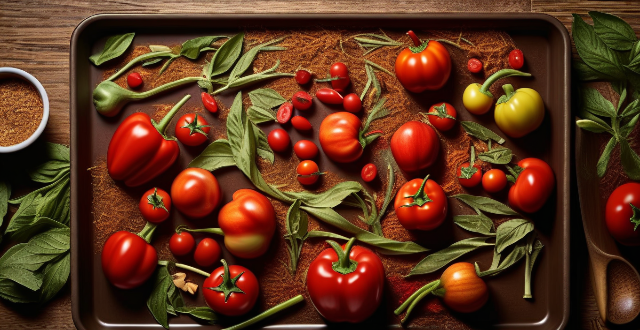To recreate authentic Sichuan flavors at home without making it too spicy, focus on understanding key flavor components like Ma La (numbing spice), hot and spicy, and sweet and fragrant. Select ingredients carefully, using moderately hot chili peppers and Sichuan peppercorns sparingly. Incorporate aromatics like garlic, ginger, and doubanjiang. Utilize cooking techniques such as toasting peppercorns, controlling heat with a mix of chili forms, balancing flavors, and tasting as you cook to adjust seasoning. Try making a classic Sichuan dish like Kung Pao Chicken with these tips in mind to achieve an authentic taste without overwhelming spiciness.

Recreating Authentic Sichuan Flavors at Home Without Making It Too Spicy
Sichuan cuisine, known for its bold flavors and fiery heat, is a beloved culinary tradition in China. If you're looking to recreate authentic Sichuan flavors at home without making it too spicy, here are some tips and techniques to guide you:
Understanding Sichuan Flavors
Before diving into the cooking process, it's important to understand the key flavor components of Sichuan cuisine:
- Ma La (Numbing Spice): This refers to the sensation of both spiciness and numbness, typically achieved with the use of Sichuan peppercorns.
- Hot and Spicy: The heat comes from chili peppers, often in the form of dried red chilies or chili pastes.
- Sweet and Fragrant: A combination of sweet bean paste, garlic, ginger, and other aromatics that balance out the heat.
Selecting Ingredients
To achieve an authentic taste without overpowering spiciness, choose your ingredients wisely:
- Sichuan Peppercorns: Use sparingly; they provide a unique floral and citrusy flavor with a numbing effect.
- Chili Peppers: Opt for moderately hot varieties like Tien Tsin or Er Jing Tian, and adjust the quantity according to your heat tolerance.
- Aromatics: Include plenty of garlic, ginger, spring onions, and Sichuan broad bean paste (doubanjiang).
Cooking Techniques
Here are some cooking techniques to help you capture the essence of Sichuan cuisine:
1. Toasting Sichuan Peppercorns
- Lightly toast the peppercorns in a dry pan until fragrant.
- This enhances their flavor without making them too potent.
2. Controlling the Heat
- Use a mix of whole dried chilies for depth of flavor and ground chili flakes for adjustable heat.
- Remove the seeds from the chilies to reduce the spiciness.
3. Balancing Flavors
- Incorporate sweet and umami elements such as fermented black beans or sweet bean paste.
- Add a touch of sugar or honey to harmonize the dish.
4. Using Doubanjiang
- This fermented broad bean and chili paste is essential for many Sichuan dishes.
- Start with less than you think you need; you can always add more later.
5. Tasting and Adjusting
- Taste as you cook and adjust the seasoning accordingly.
- Remember, you can always add more heat but you can't take it away.
Sample Dish: Kung Pao Chicken
To put these tips into practice, try making a classic Sichuan dish like Kung Pao Chicken with reduced spiciness:
Ingredients:
- Boneless chicken, cut into small pieces
- Dry-roasted Sichuan peppercorns, crushed
- Moderately hot dried chilies, deseeded and chopped
- Doubanjiang
- Garlic, minced
- Ginger, minced
- Spring onions, chopped
- Roasted unsalted peanuts
- Soy sauce
- Cooking wine
- Sugar
- Cornstarch (for chicken marinade)
Method:
1. Marinate the chicken with soy sauce, cooking wine, and cornstarch.
2. Heat oil in a wok and stir-fry the chicken until cooked through. Set aside.
3. In the same wok, add a bit more oil and saut← the doubanjiang until the oil turns red.
4. Add garlic, ginger, and dried chilies, followed by the chicken.
5. Stir in a pinch of sugar and continue to cook for a couple of minutes.
6. Finally, add the roasted peanuts and crushed Sichuan peppercorns, tossing quickly before serving.
By following these guidelines, you can create a Sichuan-inspired dish that has all the characteristic flavors without blowing your taste buds off. Enjoy your homemade Sichuan feast!